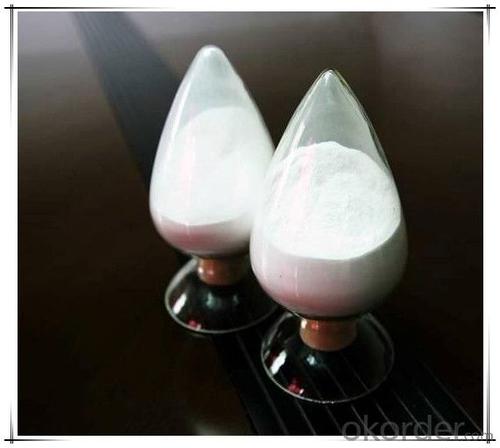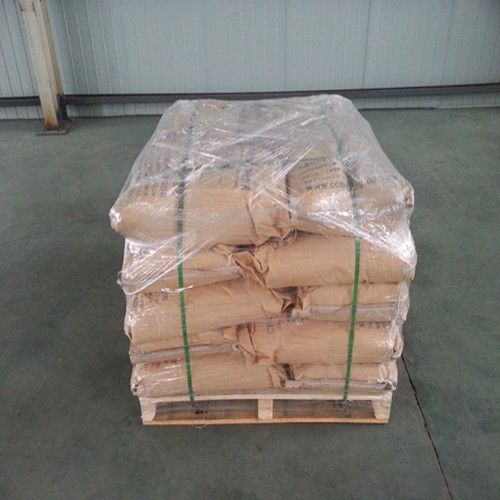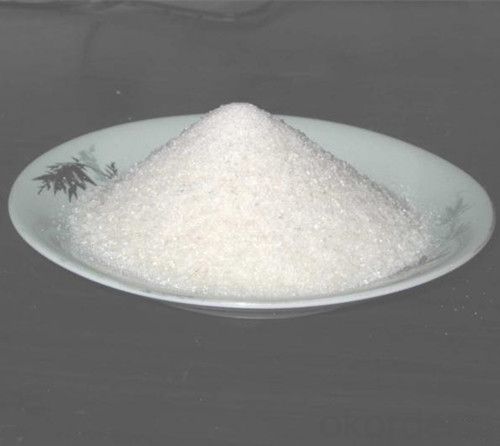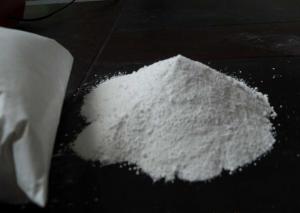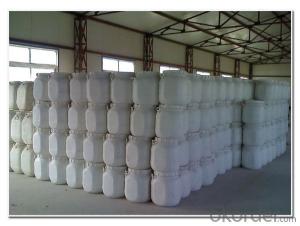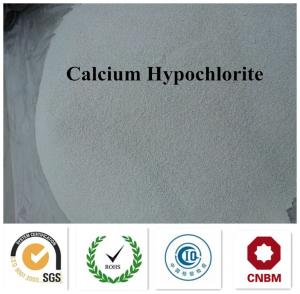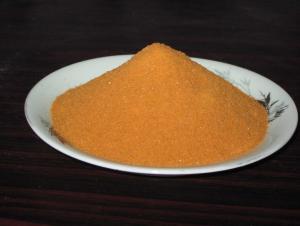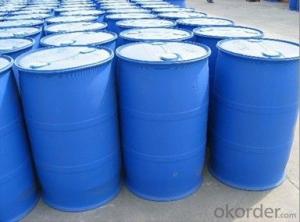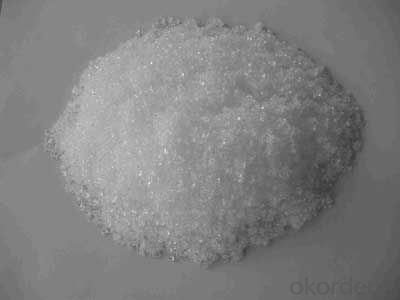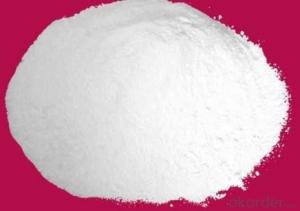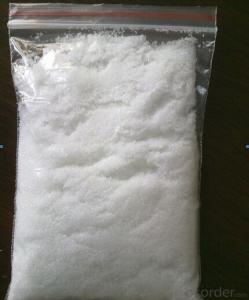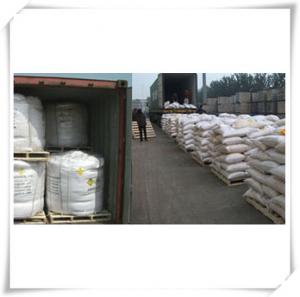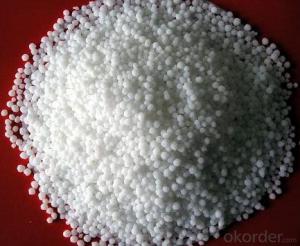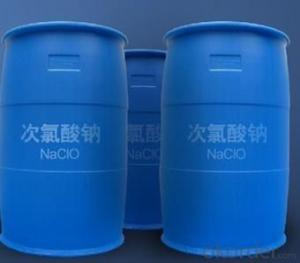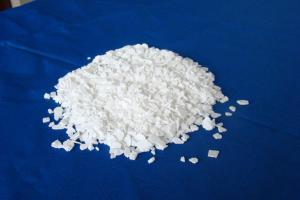Calcium Nitrate Inorganic Salt Construction Chemical
- Loading Port:
- China main port
- Payment Terms:
- TT OR LC
- Min Order Qty:
- 1000 kg
- Supply Capability:
- 500000 kg/month
OKorder Service Pledge
OKorder Financial Service
You Might Also Like
| Calcium nitrate inorganic salt |
Description: Technical standard : Q/140706CSC002-2005 Molecular Formula:Ca(NO3)2.4H2O Colorless transparent crystal,soluble in water, methanol, ethanol, in the air easily flows angle, is the oxidant, the case of organic compounds, sulfur combustion and explosion that occurred. Physicochemical Properties: Calcium nitrate tetrahydrate is a white columnar shape crystal of monoclinic system. A crystallographic form. Specific Density: 1.895. It decomposes at 132°C. The p roduct is apt to dissolve in water, methanol, ethanol, acetone. Not dissolve in nitric acid. The calciu m nitrate is used as an oxidizer. It will burn once in contact with easy combustion things. It has a pro perty of rot ,and it can burn our skin.
Calcium nitrate mainly used in refrigerants, rubber coagulant, is also used in pyrotechnics, tubes, available fertilizer.
Package avoid moisture,seal, shall not organic matter, sulfur mixed storage. storage process to prevent rain and sun exposure.
25/50KGwoven bags or packed according to the requirements of customers..
ItemIndexIndustrial GradeAgricultural Grade content≥99.0%≥99.0%PH value5.0-7.05.0-7.0Heavy metal≤0.0005%≤0.001%Water insoluble≤0.01%≤0.02%Sulphate≤0.02%≤0.02%Iron≤0.002%≤0.01%Chlorites≤0.005%≤0.005%Calcium oxides content(CaO)---≥23.0% content(N)---≥11.7% FAQ 1.Q: What is MOQ? A: Our MOQ is 1 TON. 2.Q: Could you offer free sample? A: We can provide free samples to you for quality testing. 3.Q: What about your packing? A: For liquid: Flexitank, or IBC tank 1000L For powder:Woven fabric bag with plastic film liner( 25kg or 1000kg) Clients’ packing is workable. 4.Q: How about your productive capacity? A: 150000 tons/Year. 5.Q: What is your delivery time? A: Within 7 days after received deposit or L/C at sight. |
- Q: What foods contain inorganic salts?
- Most of the food contains inorganic salts, the so-called inorganic salts, also known as minerals or ash. Minerals are naturally occurring compounds or natural elements in the crust. There are about 50 kinds of minerals in the human body, although they in the human body only 4% of body weight, but it is an essential part of the organism. Kelp, jellyfish, seaweed, moss; bones, soy products, lean meat, animal liver, brown rice and so on.
- Q: Do inorganic mercury salts bioaccumulate?
- Yes they do bioaccumulate. Mercury builds up for years and years, and eventually sits in a residue of pure mercury. - JJ
- Q: Sodiumcorbonate is inorganic salt , why it is not organic substance even it contains carbon?
- Organic molecules have carbon to carbon bonds. EDIT: I wonder why I got a thumb down for stating the definition of an organic molecule? Yahoo answers is a weird place. If there's only one carbon atom in a molecule its not an organic molecule, because there can be no C-C bonds...
- Q: What is the inorganic salt, is not the organic salt and is not the inorganic salt
- There is no concept of organic salt inorganic salt inorganic salts in the class of chanting
- Q: What are the important physiological functions of inorganic salts in cells
- As a result of metabolism, every day a certain amount of inorganic salts from a variety of ways out of the body, which will be added through the diet. The metabolism of inorganic salts can be judged by analyzing the concentration of blood, hair, urine or tissue. The role of inorganic salts in the human body is interrelated. In the appropriate concentration range beneficial to the health of people and animals and plants, lack or too much can cause disease, and disease and affect its metabolism, often increase its consumption. In China, the lack of calcium, iron and iodine is more common. Selenium, fluoride and other geochemical environment with the different, both the lack of disease such as Keshan disease and Kashin-Beck disease, teeth, etc., there are too many diseases such as fluorosis and selenium poisoning.
- Q: what is the function of the organic part of bone matrix?of the inorganic part(bone salts)?
- The organic part is cells that produce bone matrix (inorganic) with excess calcium and phosphorus, and break down the bone salts when the calcium is needed elsewhere in the body. The inorganic matrix provides protection, support and structure for the body. And, actually, red bone marrow is the place where formed elements of the blood are manufactured. Dude, this is not exactly botany. :-P
- Q: A solution is known to contain an inorganic salt of one of the following elements. The solution is colorless. The solution contains a salt ofa. Cub. Mnc. Fed. Nie. Zn
- Mn or Zn. Both MnSO4 and ZnSO4 solutions are water-white. KMnO4 is purple. But you did not stipulate.
- Q: Advertisements related to inorganic salts -.-,
- This is a good new, with a new cover in the cover of high calcium, a top of the past five, high pressure film, fruit flavor, a piece of bang on the fifth floor, not the same time, Feast children! One day one, the effect is good, but also affordable!
- Q: What are organic and inorganic salts?
- Salt is a mineral from the Earth. Salts similar to iodized are extra munufactured and aren't fully typical. However salts like sea salt have the leat amount of processing. Some say that sea salt is healthier since it's he most traditional state of salt that you could get in mass production. I wolud must agree with them.
- Q: Is urea an inorganic salt?
- Is not organic matter ah inorganic salts are present in the body and food minerals in the mineral, composed of organic matter and inorganic synthesis of the human body has been found to have more than 20 kinds of essential inorganic salts, about 4 to 5% of body weight. More (> 5g) for calcium, phosphorus, potassium, sodium, chlorine, magnesium, sulfur seven; daily dietary requirements are more than 100mg, known as constant elements. Other low content, with the modern analysis of technological progress Iron, copper, zinc, manganese, cobalt, molybdenum, selenium, chromium, nickel, silicon, fluorine, vanadium and other elements were found by atomic absorption spectroscopy, neutron activation, plasma emission spectroscopy and other trace analysis methods. But also the human body is necessary, the daily dietary requirements for the amount of μg ~ mg called trace elements.
Send your message to us
Calcium Nitrate Inorganic Salt Construction Chemical
- Loading Port:
- China main port
- Payment Terms:
- TT OR LC
- Min Order Qty:
- 1000 kg
- Supply Capability:
- 500000 kg/month
OKorder Service Pledge
OKorder Financial Service
Similar products
Hot products
Hot Searches
Related keywords



